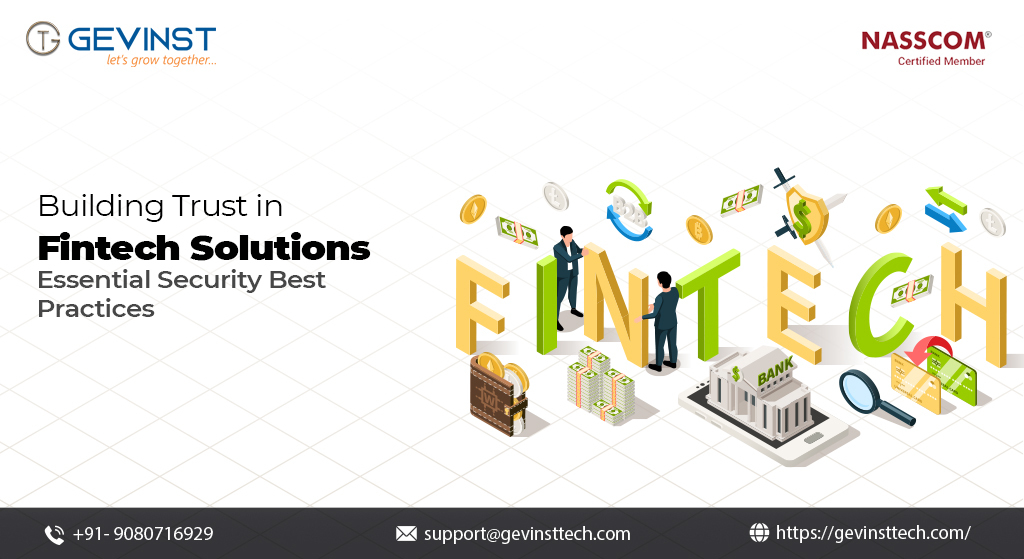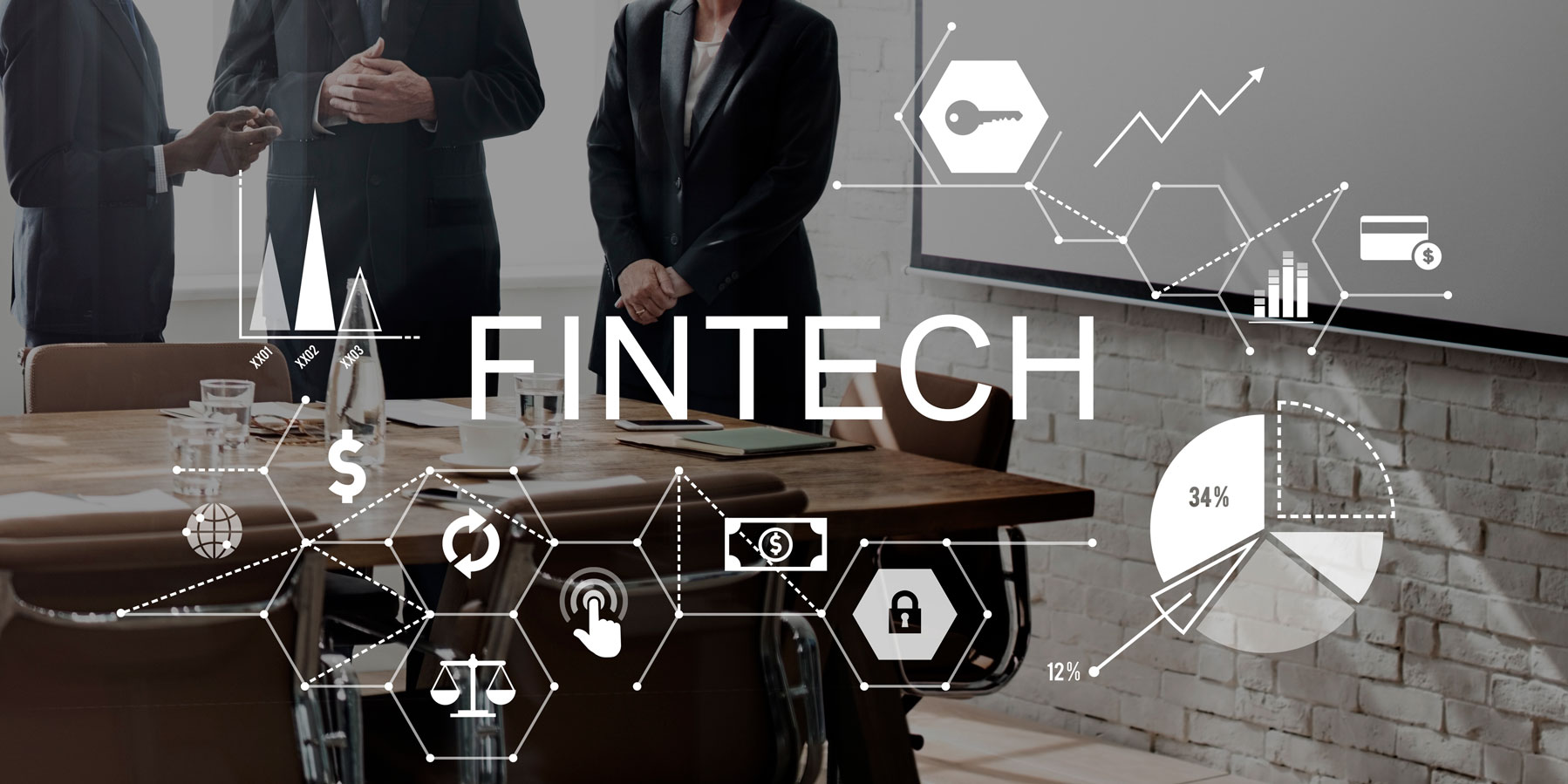
Fintech solutions are transforming the way we handle our finances in the era of digital transformation. These developments, which range from peer-to-peer payment networks to mobile banking apps, provide efficiency, speed, and convenience. However, developing user trust is crucial in an environment where money security is critical. This is where implementing strong security procedures becomes essential to developing profitable financial software.
Why Security is Critical in Fintech?
Financial data is extremely sensitive, and any compromise might have disastrous effects on users. Hackers are always changing their strategies; they are now focusing on application vulnerabilities and taking advantage of careless users. A fintech app security breach can result in identity theft, monetary losses, and a decline in consumer trust in the sector as a whole.
Building Security into the Fintech Development Process
Security must be integrated into every phase of the development lifecycle of fintech apps; it cannot be an afterthought. The following are some crucial best practices to think about:
1. Secure App Development
A secure fintech app development process requires a collaborative approach. DevOps methodologies, which promote continuous integration and delivery (CI/CD), play a vital role in ensuring ongoing security.
- Start with a Secure Foundation
Choose a reliable development framework and libraries with a proven track record of security. Leverage secure coding practices and conduct regular code reviews to identify and address vulnerabilities.
- Embrace DevSecOps
Integrate security considerations into all phases of development, operations, and deployment. This ensures continuous monitoring and proactive mitigation of risks.
- Automated Security Testing
Integrate automated security testing tools into the CI/CD pipeline. These tools can identify vulnerabilities and potential security flaws early in the development cycle, allowing for prompt remediation.
- Regular Penetration Testing
Conduct regular penetration testing to simulate real-world attacks and identify exploitable weaknesses in the system. This proactive approach helps to uncover vulnerabilities before they can be exploited by malicious actors.
- Security Patch Management
Implement a robust patch management system to ensure that all software components are kept up-to-date with the latest security patches.

2. Robust Authentication and Authorization
- Multi-Factor Authentication (MFA)
Implement MFA as a mandatory layer of security for all logins and financial transactions. This adds an extra step beyond passwords, making it significantly harder for unauthorized access.
- Biometric Authentication
Consider fingerprint or facial recognition for added security, particularly for high-value transactions.
- Least Privilege Principle
Grant users only the minimum level of access required to perform their tasks. This minimizes the potential damage if credentials are compromised.
3. Data Security Measures
- Encryption
Encrypt sensitive data both at rest and in transit. This renders the information unreadable even if intercepted by attackers.
- Tokenization
Replace sensitive data like credit card numbers with tokens that can be used for transactions without exposing the actual information.
- Regular Data Backups
Implement a robust backup and disaster recovery plan to ensure data integrity and availability in case of incidents.
4. Secure Mobile App Development
- Secure Coding Practices
Follow established guidelines for mobile app development to address common vulnerabilities like SQL injection and cross-site scripting.
- App Store and Play Store Security Reviews
Adhere to the security guidelines set forth by app stores to ensure your app meets their stringent standards.
- Regular App Updates
Patch vulnerabilities promptly by releasing timely updates that address security issues identified through testing and monitoring.
5. Transparency and User Education
- Clear Privacy Policy
Provide a transparent and easy-to-understand privacy policy that outlines how user data is collected, used, and protected.
- Security Awareness Programs
Educate users about best practices for protecting their financial information, such as creating strong passwords and being wary of phishing attempts.
- Regular Communication
Keep users informed about any security incidents and the steps taken to address them. This builds trust and demonstrates a commitment to user safety.
Beyond the Code: Building a Culture of Security
Security is not just about technology; it’s also about establishing a culture of security within your organization. This involves:

- Security Awareness Training
Regularly train employees on security best practices and how to identify and report suspicious activity.
- Penetration Testing
Conduct regular penetration testing to identify vulnerabilities in your systems and applications before attackers can exploit them.
- Incident Response Plan
Develop a comprehensive plan for responding to security incidents, including procedures for containment, mitigation, and recovery.
AI & ML: Powering the Fintech Revolution
At the heart of the fintech revolution lies the ability to leverage vast amounts of data. AI and ML excel at analyzing this data, extracting valuable insights, and making intelligent predictions. This translates into a multitude of benefits for both financial institutions and consumers:
1. Enhanced Fraud Detection
In real-time, machine learning algorithms can examine transaction patterns and spot irregularities that could be signs of fraud. By taking preventative measures, financial losses are greatly decreased, and users and institutions are safeguarded.
2. Personalized Financial Services
By examining a user’s past financial transactions, spending patterns, and risk tolerance, AI may tailor financial experiences. This makes it possible for fintech apps to suggest appropriate investment plans, budgeting tools, and financial goods.
3. Streamlined Loan Applications
More data points than traditional credit scores may be analyzed by ML-powered credit scoring models, which allows for quicker and more equitable loan approvals, especially for underprivileged communities.
4. Automated Wealth Management
AI-powered robo-counselors can automate wealth management chores and provide portfolio management and individualized investment advice at a fraction of the price of traditional financial advisors.
5. Improved Customer Service
Natural language processing (NLP) and artificial intelligence (AI) powered chatbots can offer round-the-clock customer service, providing prompt assistance and effectively answering routine questions.

The Rise of the Minimum Viable Product (MVP)
Fintech app development is shifting toward a “build-test-learn” methodology as AI and ML become increasingly prevalent. Fintech companies may swiftly launch basic functionality, get customer input, and iterate based on real-world data by creating a Minimum Viable Product (MVP). It can be very helpful to incorporate AI and ML functions into the MVP since this enables early testing of the main algorithms and how they affect user behaviour.
The Cost of Trust: Investing in Fintech App Development Security
Strong security measures are a necessary investment, even though they could raise the original development expenses. Data breaches can have disastrous repercussions, including monetary losses, harm to one’s reputation, and fines from the government. Fintech companies can establish confidence with their users and guarantee the long-term viability of their solutions by putting security first.
Choosing the Right Fintech App Development Partner
Selecting a reputable fintech app development company with a proven track record of security is crucial. Look for partners who:
- Have a strong understanding of industry regulations and compliance requirements.
- Employ experienced security professionals who stay up-to-date on the latest threats.
- Utilize secure development practices and tools.
- Offer ongoing security maintenance and support.
Additional Considerations
- Compliance with Regulations
Ensure your fintech app adheres to all relevant industry regulations and data privacy laws. Fintech solutions are subject to various regulations depending on the region and type of service offered. Ensure your app complies with all relevant data privacy and security regulations, such as GDPR, CCPA, and PSD2.
- Staying Updated
The cybersecurity landscape is constantly evolving. Regularly assess your security posture and stay informed about emerging threats and vulnerabilities.
By following these guidelines, fintech companies can build secure and trustworthy solutions that empower users to take control of their financial future.
Conclusion: Building a Secure Future for Fintech
Security is a continuous process that requires constant attention. Fintech businesses can create reliable and safe products that enable users to handle their finances with assurance by putting the best practices mentioned above into effect. Recall that the future of finance depends on an innovative and secure fintech environment.
At Gevinst Technologies , we understand that security is a continuous journey, not a one-time destination. That’s why we go the extra mile to build secure and reliable web and mobile applications, providing peace of mind for fintech businesses and their users.
By incorporating the best security practices into every aspect of our development process, we empower fintech companies to create innovative financial products that users can trust. We believe a secure and thriving fintech ecosystem is essential for the future of finance, and we’re committed to playing a vital role in making it a reality.






